If you’ve noticed your bird’s nest fern slowly turning brown and dying, you’re not alone. This is a common problem that has a few different causes. But don’t worry, there are a few simple solutions that will have your fern looking green and healthy in no time.
How Do I Know If My Bird’s Nest Fern Is Dying?
If you notice your bird’s nest fern beginning to yellow or brown, it is likely dying. However, there are a few things you can do to try and revive it. If it is in a pot, make sure the pot has drainage holes and that the plant is not sitting in water. If you have tried these things and the plant is still dying, it is likely beyond saving. If the plant is in a terrarium, you may also need to add more water to the terrarium. If the plant is in a terrarium, make sure the lid is not sealing the terrarium too tightly, as this can cause the environment to become too dry. The plant should also be in a humid environment, so if it is in a dry room, try misting it with water or placing it on a pebble tray. First, check the plant’s environment.
Browned Fronds and Leaf Tips
This is actually a very common problem that can be easily fixed. If you notice that your bird’s nest fern has browned fronds or leaf tips, don’t despair!
This means that they are used to filtered light and can be easily scorched by direct sunlight. Bird’s nest ferns are native to tropical rainforests, where they grow beneath the canopy of taller trees. The most likely cause of browned fronds or leaf tips is too much direct sunlight.
If the browning is severe, you can also trim off the affected leaves. If you think that too much sun is the problem, simply move your plant to a shadier spot.
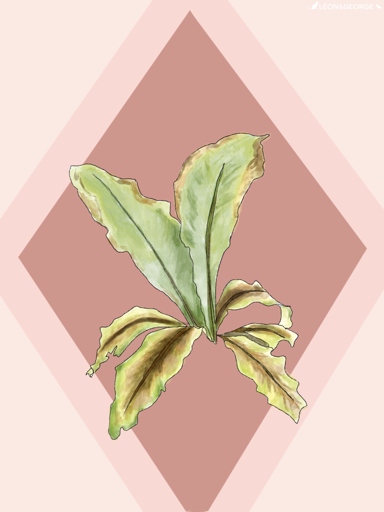
Bird’s nest ferns like to be kept moist, but not soggy. If the soil is constantly wet, it can lead to root rot, which will eventually kill the plant. Another possible cause of browned fronds or leaf tips is excessive watering.
To fix this problem, make sure that you are only watering your plant when the soil is dry to the touch. If the root rot is severe, you may need to repot the plant in fresh, well-draining potting mix.
If you have followed these tips and your bird’s nest fern is still dying, it may be time to consult a professional. There could be a more serious problem that is beyond your control, such as pests or disease.
Brown Spots on Fronds
If you notice brown spots on your bird’s nest fern fronds, it is likely due to one of two reasons. Bird’s nest ferns prefer shady, humid conditions and direct sunlight can scorch their delicate leaves. The first possibility is that the plant is getting too much sun. If you think this may be the problem, move your plant to a shadier spot.
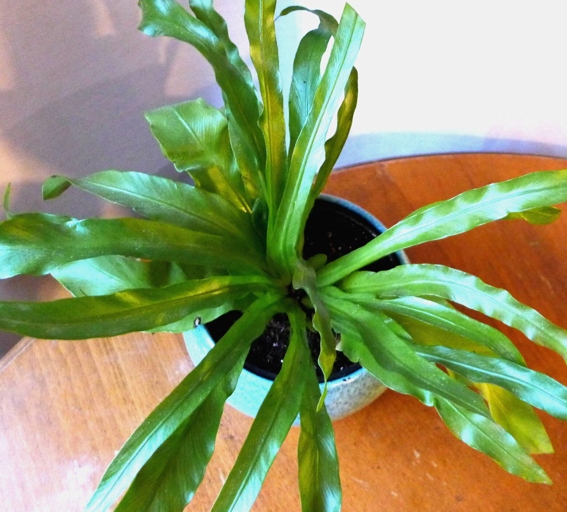
If the brown spots are accompanied by yellowing or wilting leaves, it is likely fusarium and you should consult a professional for treatment options. This disease is often spread by overwatering, so make sure you are not watering your plant too often. The second possibility is that the brown spots are caused by a fungal disease called fusarium.
Brown Center
The bird’s nest fern, Asplenium nidus, is a tropical plant that is native to Southeast Asia. The plant is not parasitic, which means that it does not take nutrients from its host plant. The plant gets its name from its nest-like rosette of leaves. The bird’s nest fern is an epiphyte, which means that it grows on other plants or objects, such as trees, rocks, or buildings.
The plant does best in bright, indirect light and moist, well-drained soil. The bird’s nest fern is a popular houseplant because it is easy to care for and is tolerant of a wide range of growing conditions. The plant can also tolerate low light and occasional drought.
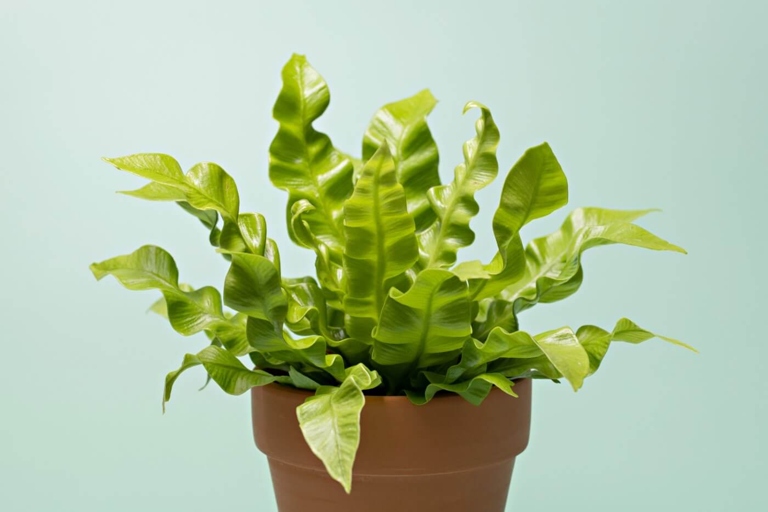
If you think your bird’s nest fern is dying, the first thing to do is check the growing conditions. If the plant is getting too much or too little of either, it will start to die. If the plant is getting the correct amount of light, water, and nutrients, then it is probably not dying, but just going through a normal growth cycle. Also, make sure the soil is not too wet or too dry. Make sure the plant is getting enough light and water.
Leaf Discoloration or Paling
This can be a problem for bird’s nest ferns, which need bright, indirect light to thrive. Leaf discoloration or paling is often an indication that a plant is not getting enough light. In this case, try moving the fern to a spot where it will get indirect light. If the leaves are still pale after a few days, it’s possible that the plant is getting too much direct sunlight, which can scorch the leaves. If your fern’s leaves are looking pale, try moving it to a brighter spot.
Yellowing Fronds
There are a few possible causes and some easy solutions to get your plant back to its lush, green self. If your bird’s nest fern is looking a little worse for the wear with yellowing fronds, don’t despair.
While bird’s nest ferns do need some bright, indirect light to thrive, too much sun can cause the leaves to turn yellow. Move your plant to a spot that gets less light and you should see a difference. One common reason for yellowing fronds is too much direct sunlight.
Let the soil dry out completely between waterings and your plant should start to recover. Another possible cause is too much water. If the soil is constantly wet, it can lead to root rot, which will cause the leaves to turn yellow and eventually die.

Choose a pot that’s just a few inches wider than the current one and you should see an improvement. If the pot is too small, the roots can become cramped, which will stress the plant and cause the leaves to turn yellow. If you’ve ruled out both of these possibilities and your bird’s nest fern is still yellowing, it might be time to repot.
Presence of Sooty Mold
If you notice your bird’s nest fern dying, it could be due to the presence of sooty mold. As a result, the plant will slowly start to die. The honeydew provides a perfect environment for the sooty mold to thrive, and as it grows, it covers the leaves of the plant, preventing them from photosynthesizing. Sooty mold is a type of fungus that grows on the honeydew secreted by aphids and other sucking insects.

To get rid of sooty mold, you need to get rid of the insects that are secreting the honeydew. Once the insects are gone, the sooty mold will start to die off on its own. This can be done by spraying the plant with an insecticide or by manually removing the insects from the plant.
Wilting and Drooping
If your bird’s nest fern is wilting and drooping, it’s likely due to one of three things: too much sun, too little water, or too much fertilizer.
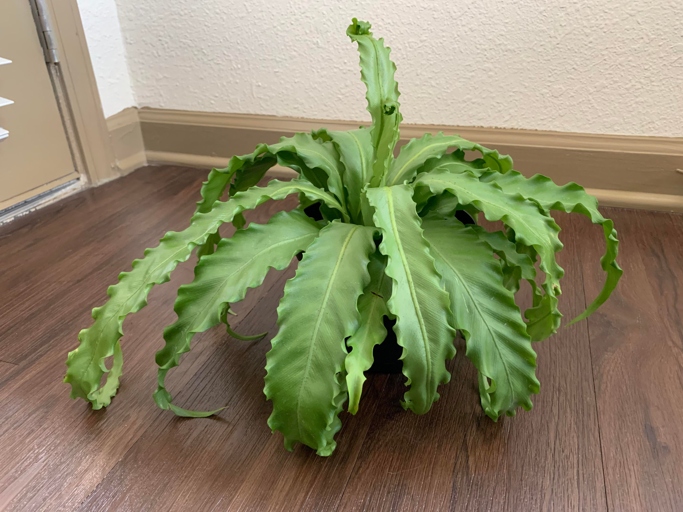
If your fern is in a sunny spot, move it to a shadier location. If it’s in a shady spot, give it a little more light.
Water your fern when the soil is dry to the touch. Be sure to not overwater, as this can also cause wilting and drooping.
If you think you may have over-fertilized your fern, flush the soil with water to remove any excess fertilizer.
What is Causing My Bird’s Nest Fern to Die?
If your bird’s nest fern is dying, it’s likely due to one of three things: too much sun, too little water, or pests.
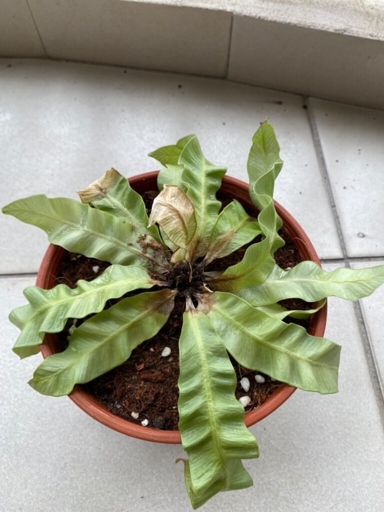
Too much sun can cause the leaves of the fern to turn brown and crispy. If you think this might be the problem, move your fern to a spot that gets less light.
Make sure you’re watering your fern regularly, and misting it with water if the air in your home is dry. Too little water can also cause the leaves of the fern to turn brown and crispy.
If that doesn’t work, you may need to use an insecticide. Pests can also cause problems for bird’s nest ferns. If you see small insects crawling on the leaves of your fern, you can try spraying the plant with water to dislodge them.
Overwatering is the Most Common Culprit for Bird’s Nest Fern Dying
If you’re wondering why your bird’s nest fern is dying, the most likely culprit is overwatering. Bird’s nest ferns are native to tropical regions and prefer high humidity. They are epiphytes, which means they grow on other plants or objects, and their roots are primarily used for anchoring, not for absorbing water.

When you overwater a bird’s nest fern, the roots can’t take up all the water and the plant starts to rot. The leaves will turn brown and mushy, and the plant will eventually die. If you think you may be overwatering your bird’s nest fern, reduce the frequency of watering and make sure the pot has good drainage.
How to Fix a Bird’s Nest Fern Dying from Overwatering
Allow the soil to dry out completely before giving it any more water. Once the soil is dry, you can start watering it again, but be sure to water it less frequently than you did before. If your bird’s nest fern is dying from overwatering, the first thing you need to do is stop watering it.

This will help the plant to focus its energy on new growth. If the leaves of your bird’s nest fern are yellow or brown, you can try trimming them off.
It prefers shady, humid conditions. If you can provide these conditions, your bird’s nest fern should start to recover. Finally, make sure you are not placing your bird’s nest fern in direct sunlight.
Browning of the Center/Crown of your Bird’s Nest Fern
Second, the browning could be caused by too much water. Try feeding your plant with a balanced fertilizer, and see if that makes a difference. Move your plant to a spot that gets indirect light, and see if that helps. Make sure you’re letting the soil dry out between waterings, and try to water from the bottom up. If you’re still having trouble, it’s best to consult a professional. Third, it could be a sign of a nutrient deficiency. First, it could be due to too much direct sunlight. If you notice that the center or crown of your bird’s nest fern is browning, there are a few possible causes.
Can You Save a Bird’s Nest Fern with Brown Center?
If you have a bird’s nest fern with a brown center, don’t despair! There are a few things you can do to save your plant.
First, check the soil. If it is dry, water the plant thoroughly. If the soil is soggy, however, you may need to repot the fern in fresh potting mix.
You can also try moving it to a bathroom or kitchen, where the humidity is usually higher. Next, take a look at the plant’s environment. Bird’s nest ferns prefer humid conditions, so if your home is on the dry side, you may need to mist the plant regularly.
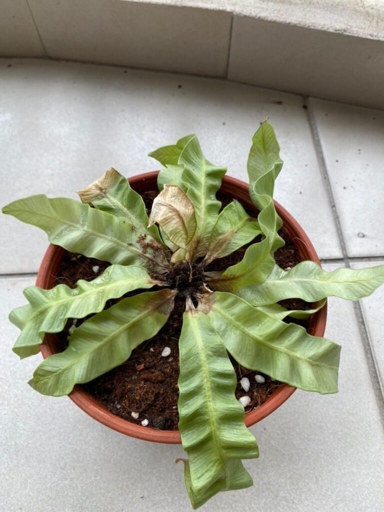
Finally, make sure the plant is getting enough light. If your plant is in a dark corner, try moving it to a brighter spot. Bird’s nest ferns do best in bright, indirect sunlight.
With a little TLC, your bird’s nest fern should soon be looking green and healthy again!
Lack of Water
These plants are native to tropical climates and require high humidity to thrive. If the air in your home is dry, the plant will slowly start to wilt and die. If you notice your bird’s nest fern dying, it is likely due to a lack of water.
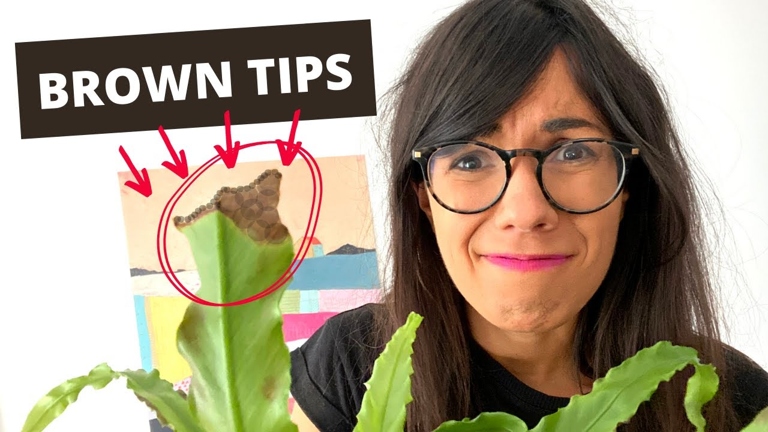
You can also place the pot on a tray of pebbles and water to create a humid environment. To prevent this from happening, mist the plant regularly with water. If the plant is already wilting, try giving it a thorough watering and increasing the humidity around it. With proper care, your bird’s nest fern should recover and flourish.
Solution
There are a few things you can do to keep your bird’s nest fern healthy and thriving. This beautiful tropical plant is notoriously difficult to keep alive, even for experienced gardeners. If you’ve ever had a bird’s nest fern (Asplenium nidus) die on you, you’re not alone. But don’t despair!

Bird’s nest ferns like to be kept moist, but not soggy. First, make sure you’re watering it correctly. Allow the top inch or so of soil to dry out between waterings.
If your home is on the dry side, try misting your plant daily or setting it on a pebble tray. Bird’s nest ferns are native to tropical rainforests, so they prefer humid conditions. Second, give your plant plenty of humidity.
Bird’s nest ferns do best in bright, indirect light. Too much direct sun will scorch the leaves, so if you’re unsure, it’s better to err on the side of too little light rather than too much. Finally, make sure your plant is getting enough light.
With a little care and attention, you can keep your bird’s nest fern healthy and happy for years to come!
Bacterial Blight
If the plant is already infected, you can try to remove the affected leaves and stems. Bacterial blight is a common problem for bird’s nest ferns. The leaves of the plant will turn yellow and brown and eventually die. You can also try to treat the plant with a fungicide. The best way to prevent bacterial blight is to water the plant regularly and to keep the leaves dry.
How to Control Bacterial Blight in Bird’s Nest Fern
You can also try treating the fern with a fungicide. This disease is caused by a bacteria called Pseudomonas cichorii, which infects the leaves of the fern. If you live in an area with high humidity, you may need to water the fern more often. The bacteria are spread by water, so they can easily spread to other plants in your home. You can also mist the fern with a water bottle to help keep the leaves dry. If your fern is already infected with bacterial blight, you can try to control the disease by cutting off the affected leaves. Be sure to follow the instructions on the label carefully. If your bird’s nest fern is dying, it’s likely due to bacterial blight. Water the fern in the morning so the leaves have time to dry before nightfall. To control bacterial blight, you need to keep your fern dry. Dispose of the leaves in a plastic bag so the bacteria don’t spread.
Bird’s Nest Fern Leaves Turning Yellow
If the problem persists, you may need to invest in a humidifier. These plants are native to tropical regions and require high humidity to thrive. If your bird’s nest fern leaves are turning yellow, it is likely due to a lack of humidity. You can also try moving the plant to a bathroom or kitchen, where humidity levels are typically higher. Try misting the leaves with water daily or setting the pot on a tray of pebbles and water.
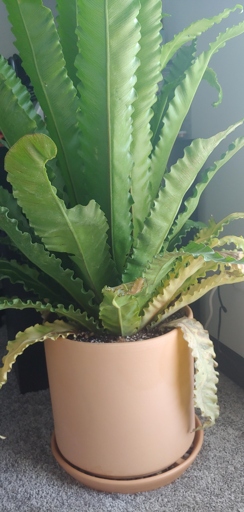
Bird’s nest ferns prefer bright, indirect light. Another possible reason for yellowing leaves is too much direct sunlight. If the leaves are getting too much sun, they will turn yellow. Move the plant to a shadier spot and see if the leaves start to green up.
Finally, yellowing leaves can also be a sign of over- or under-watering. These plants like to be kept evenly moist, but not soggy. If the leaves are wilting or browning in addition to turning yellow, this is a sign of too little water. Check the soil before watering and only add water if the top inch or so is dry.
How to Revive Bird’s Nest Fern with Yellow Leaves
To revive your plant, follow these steps: If your bird’s nest fern has yellow leaves, it is likely due to a lack of water or humidity.
Water your plant thoroughly, making sure to evenly moisten the soil. 1.
Place your plant in a location with high humidity, such as a bathroom or kitchen. 2.
If the leaves are still yellow after following these steps, you can try misting the plant with water or using a humidifier. 3.
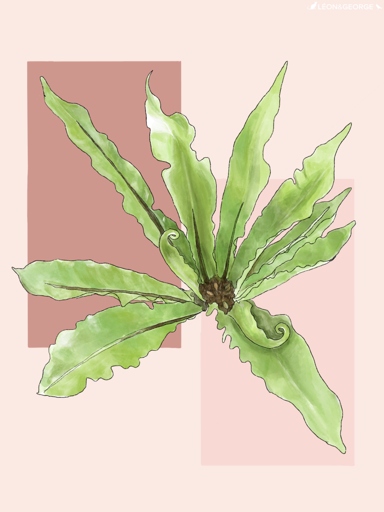
With a little care, your bird’s nest fern should soon be green and healthy again!
Rhizoctonia Blight
This can lead to the plant’s death. The fungus attacks the plant’s roots, causing them to rot. If you think your bird’s nest fern is suffering from rhizoctonia blight, you should contact a professional for help. Rhizoctonia blight is a serious problem for bird’s nest ferns. The best way to prevent this problem is to keep the plant’s roots healthy and free from stress.
Solution
If all else fails, you may need to get a new plant. First, check the soil to see if it’s too dry or too wet. If it’s too dry, water it thoroughly and make sure the pot has drainage holes so that the excess water can escape. If it’s too wet, try to remove some of the water and let the soil dry out a bit. If you’re noticing that your bird’s nest fern is dying, there are a few things you can do to try and revive it. You can also try moving the plant to a spot that gets more or less light, depending on what it needs.
Too Much Fertilizer
If you’ve ever had a houseplant that just wouldn’t seem to thrive no matter what you did, it might have been because you were giving it too much fertilizer. It’s a common mistake, especially with new gardeners. Fertilizer is essential for plants, but too much of a good thing can be harmful.

If the plant shows signs of recovery, you can start fertilizing again, but be sure to use a light hand. This can lead to a number of problems, including leaf burn, stunted growth, and even death. If you think you might have over-fertilized your plant, the first thing to do is stop fertilizing it and let the soil rest for a few weeks. When you over-fertilize a plant, the roots are unable to absorb all of the nutrients and the excess builds up in the soil.
If you’re not sure whether you’ve over-fertilized or not, it’s always best to err on the side of caution. Less is almost always more when it comes to fertilizer.
Solution
If they are, you can try repotting the plant in fresh, sterile potting mix. If the roots are healthy, the problem may be too much or too little water. If all else fails, you may need to start over with a new plant. First, check the roots to see if they are rotting. If your bird’s nest fern is dying, there are a few possible solutions. You can also try misting the plant to increase humidity. If you’re not watering enough, water the plant more frequently. If you’re watering the plant too much, let the soil dry out before watering again.
Pest Infestations
Pests can wreak havoc on your plants, causing them to wilt, discolor, and ultimately die. If you’ve ever had a plant that just wouldn’t seem to thrive no matter what you did, you may have been the victim of a pest infestation.
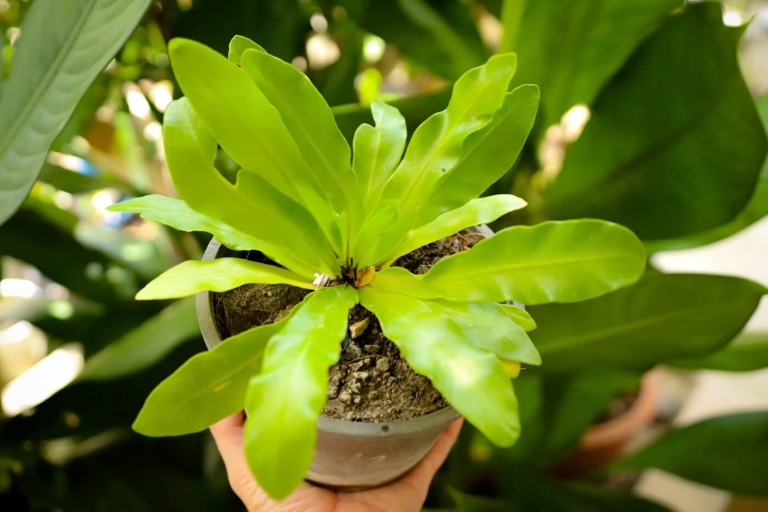
There are a few telltale signs that you may have a pest problem on your hands. If you notice your plants are being chewed on or that they have strange holes in their leaves, it’s a good indication that pests are present. You may also see pests themselves, such as aphids, whiteflies, or mealybugs.
First, try to identify the type of pest that is causing the problem. This will help you choose the most effective treatment method. Next, take steps to remove the pests from your plant, such as using a pesticide or insecticide. If you think your plant has a pest problem, there are a few things you can do to get rid of the pests and save your plant. Finally, make sure to keep an eye on your plant and take action immediately if you see any signs of pests returning.
Scale Insects
However, if you see small, brownish bumps on the leaves of your bird’s nest fern, it’s likely that scale insects are to blame. There are many reasons why a bird’s nest fern might die, but one of the most common is due to scale insects. Scale insects are small, wingless creatures that feed on the sap of plants. They can be difficult to spot, as they often blend in with the plant’s leaves.
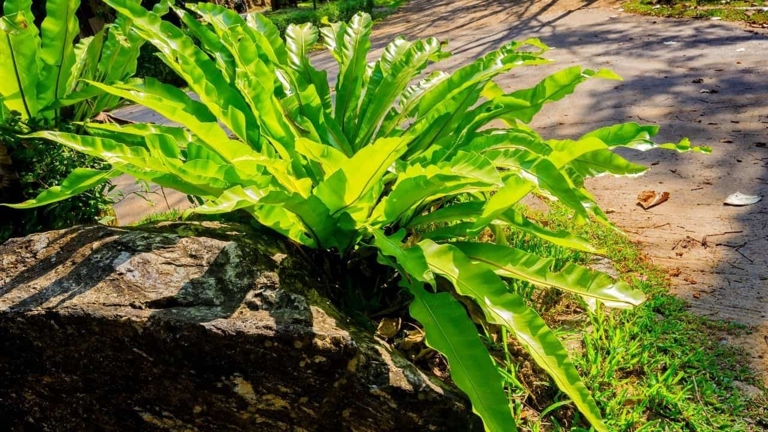
Be sure to follow the instructions on the insecticide label carefully, as some products can be harmful to birds. Scale insects can quickly kill a bird’s nest fern if left unchecked. Once the scale insects are gone, your bird’s nest fern should start to recover. To get rid of them, you’ll need to treat the plant with an insecticide.
Mealybugs
Mealybugs are common plant pests that can infest both indoor and outdoor plants. These pests are especially fond of succulent plants, like bird’s nest ferns. If you’ve ever noticed small, white, fuzzy bugs on your plants, chances are they’re mealybugs.
Mealybugs feed on plant sap, which can weaken and even kill your plant. In addition to causing damage to your plant, mealybugs can also spread plant diseases. If you see mealybugs on your plant, it’s important to take action to remove them as soon as possible.
If you have a serious infestation, you may need to use an insecticide. There are a few different ways to get rid of mealybugs. You can use a cotton swab or Q-tip dipped in rubbing alcohol to remove them from your plant. You can also try using a mixture of water and dish soap.
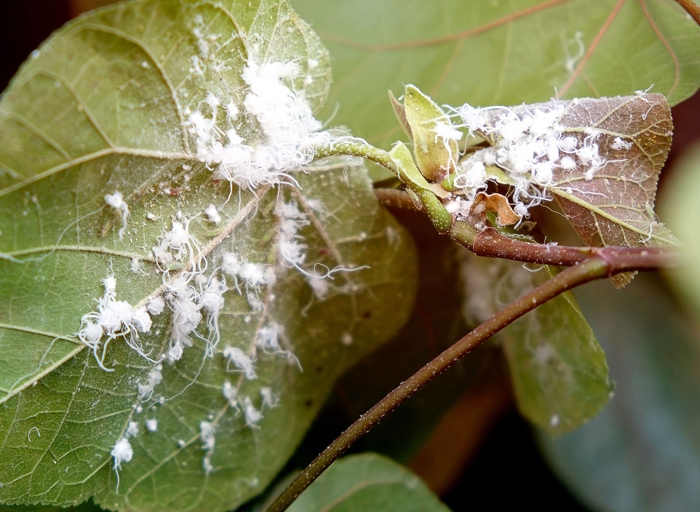
These pests can cause serious damage to your plants, so it’s best to get rid of them as soon as possible. If you think you may have mealybugs, it’s important to take action right away.
Leaf Nematodes
The fern may also produce fewer leaves, and the leaves that it does produce may be smaller than normal. These pests feed on the roots of the fern, causing the plant to become stunted and yellow. Leaf nematodes are tiny, plant-parasitic worms that can cause big problems for your bird’s nest fern. If left unchecked, leaf nematodes can kill your bird’s nest fern.

To prevent leaf nematodes from damaging your plant, it’s important to keep the fern’s roots healthy. Be sure to follow the instructions on the label carefully. If you suspect that your fern has leaf nematodes, you can try treating it with an insecticide. Water the fern regularly and fertilize it with a balanced fertilizer.
Slugs and Snails
Slugs and snails are common pests in gardens and can cause serious damage to plants. They are especially fond of tender new growth, and can quickly strip a plant of its leaves.
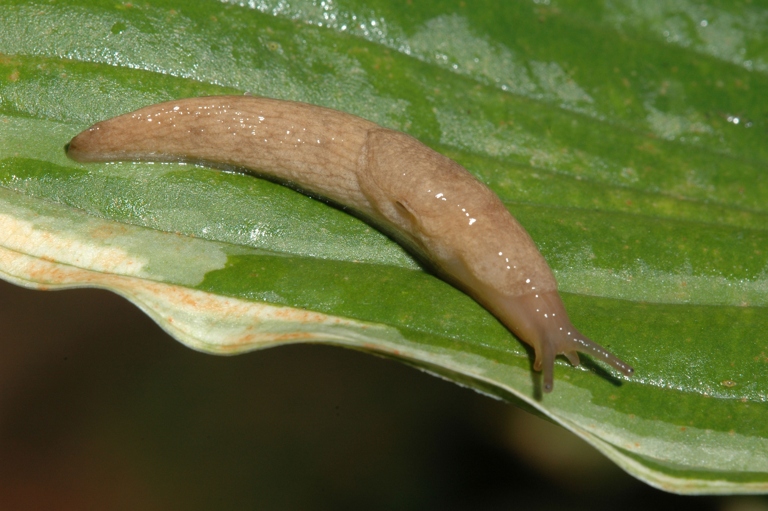
If you find them, you can remove them by hand or use a pesticide. Slugs and snails are most active at night, so it’s important to check your plants regularly for signs of damage.
Finally, consider using a barrier around your plants, such as diatomaceous earth, to keep these pests out. First, make sure to keep your garden clean and free of debris where they can hide. There are a few things you can do to prevent slugs and snails from damaging your plants. Second, water your plants in the morning so they have time to dry off before nightfall.
Light Problems
If your bird’s nest fern is dying, it’s likely due to a light problem. The plant needs bright, indirect light to thrive, and too much or too little light can cause problems.
If your fern is getting too much light, it will start to turn brown and dry out. Move it to a spot with less light and increase the humidity around it by misting it with water or setting it on a pebble tray.
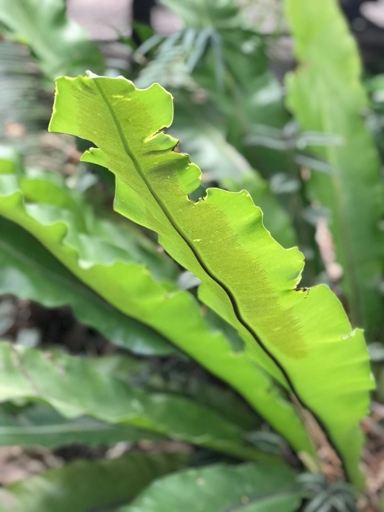
You may also need to increase the humidity around it. Move it to a brighter spot and make sure it’s getting enough water. If your fern isn’t getting enough light, it will start to look pale and limp.
If you’re not sure how much light your fern needs, ask a nursery or plant specialist for help. With the right care, your bird’s nest fern will thrive and add a touch of green to your home.
Solution
Overwatering, lack of humidity, too much sun, or pests are the most common reasons for a bird’s nest fern to die. If you’re wondering why your bird’s nest fern is dying, the answer is probably one of these four solutions.
If the leaves are wilted and the soil is soggy, it’s probably getting too much water. Allow the soil to dry out between watering, and make sure the pot has drainage holes so the water can escape. The first step is to check if you’re overwatering your fern.
Move it to a shadier spot and make sure it’s not in direct sunlight. If your fern is getting too much sun, it will start to turn brown and dry out.
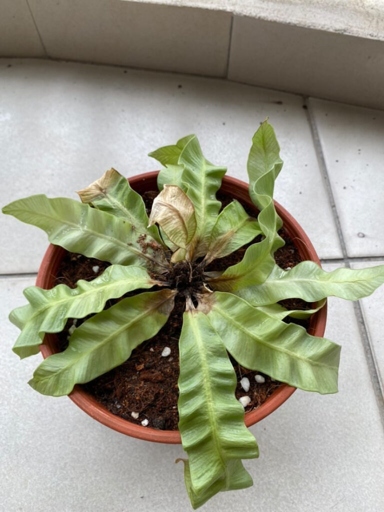
Lack of humidity is another common reason for bird’s nest ferns to die. If your home is dry, try misting your fern daily or setting the pot on a tray of pebbles and water.
Finally, pests can also be a problem. Check the leaves for signs of insects and treat with an insecticide if necessary.
Fern Anthracnose
One problem that can plague ferns is anthracnose, which is a fungal disease that causes brown or black spots on the leaves. If your bird’s nest fern has anthracnose, there are a few things you can do to help it recover. Ferns are a beautiful addition to any home, but they can be delicate and require some care to stay healthy.

Then, increase the humidity around the plant by misting it regularly or setting it on a pebble tray. With a little care, your bird’s nest fern will be healthy and beautiful again in no time. First, remove any affected leaves and dispose of them. You can also try using a fungicide, but be sure to follow the directions carefully.
How to Treat Fern Anthracnose
However, ferns are susceptible to a disease called anthracnose, which can cause the leaves to turn brown and die. Ferns are a common houseplant that can add a touch of greenery to any home.
There are a few things you can do to treat fern anthracnose. You can also remove any affected leaves, as this will help to prevent the disease from spreading. If your fern is already infected, you can try spraying it with a fungicide. First, make sure to water your fern regularly, as this will help to prevent the disease from spreading.
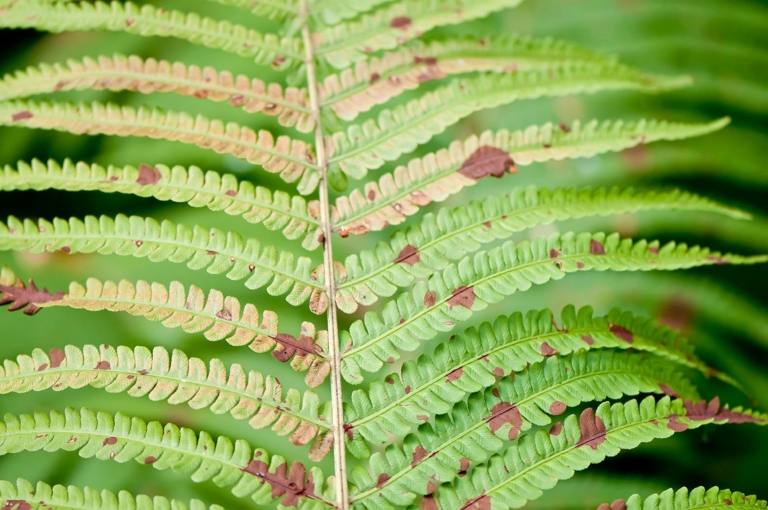
If you take these steps, you should be able to treat fern anthracnose and keep your plant healthy.
How Not to Kill Your Bird’s Nest Fern?
First, make sure you’re watering it correctly. If they’re getting too much direct sunlight, the leaves will start to turn brown. So, if you follow these tips, you should be able to keep your bird’s nest fern healthy and happy! Bird’s nest ferns like bright, indirect light. If you’re wondering how not to kill your bird’s nest fern, here are a few tips. Bird’s nest ferns like to be kept moist, but not wet. Bird’s nest ferns come from tropical environments, so they like a little extra humidity. You can mist them with water, or put them in a bathroom or kitchen where there’s more moisture in the air. Finally, make sure they’re getting enough light. Water them about once a week, or when the soil feels dry to the touch. Second, give them some humidity.
Frequently Asked Questions
1. Why is my bird’s nest fern dying?
There are several reasons why a bird’s nest fern might die. The most common reason is overwatering. Ferns like moist, but not wet, soil, so be sure to water only when the top inch or so of soil is dry. Too much water can cause the roots to rot, which will eventually kill the plant.
Other reasons for a dying fern include too much or too little light, extreme temperatures, or pests. If you think one of these might be the problem, take a look at your plant and see if you can identify the issue.
2. I’ve been watering my fern regularly, but it’s still dying. What could be the problem?
If you’ve been watering your fern regularly and it’s still dying, the problem might be that the pot doesn’t have proper drainage. Ferns like moist soil, but they don’t like to sit in water. If the pot doesn’t have drainage holes, the water will just sit in the bottom and the roots will rot.
3. I think my fern might be getting too much or too little light. What should I do?
Ferns like indirect light, so if it’s in a spot that gets direct sunlight, it might be getting too much light. Move it to a spot that gets indirect light, such as near a window. If it’s not getting enough light, it might start to turn yellow or brown. Move it to a spot that gets more light.
4. I think my fern might be getting too much or too little water. What should I do?
Ferns like moist, but not wet, soil. If you think it’s getting too much water, let the top inch or so of soil dry out before watering again. If you think it’s not getting enough water, water it until the soil is moist.
5. I think my fern might be getting too much or too little fertilizer. What should I do?
Fertilize your fern every two weeks during the growing season with a half-strength fertilizer. If you think it’s getting too much fertilizer, cut back on the amount you’re using. If you think it’s not getting enough fertilizer, increase the amount you’re using.
6. I think my fern might be getting too much or too little humidity. What should I do?
Ferns like high humidity, so if the air in your home is dry, it might be causing the fern to die. You can increase the humidity around the fern by placing it on a tray of pebbles and water or by using a humidifier.
7. I think my fern might be infested with pests. What should I do?
If you think your fern might be infested with pests, inspect it carefully for signs of insects or other pests. If you see any, you can try to remove them by hand or treat the plant with an insecticide.
8. I think my fern might be getting too much or too little air. What should I do?
Ferns like high humidity, so if the air in your home is dry, it might be causing the fern to die. You can increase the humidity around the fern by placing it on a tray of pebbles and water or by using a humidifier.
9. I think my fern might be getting too much or too little water. What should I do?
Ferns like moist, but not wet, soil. If you think it’s getting too much water, let the top inch or so of soil dry out before watering again. If you think it’s not getting enough water, water it until the soil is moist.
10. I’ve tried everything and my fern is
Final thoughts
If you notice your bird’s nest fern dying, it is likely due to too much direct sunlight, not enough humidity, or over-watering. To save your plant, move it to a shadier spot and mist the leaves daily. Allow the soil to dry out between watering. With a little TLC, your bird’s nest fern will be back to its lush, green self in no time!
